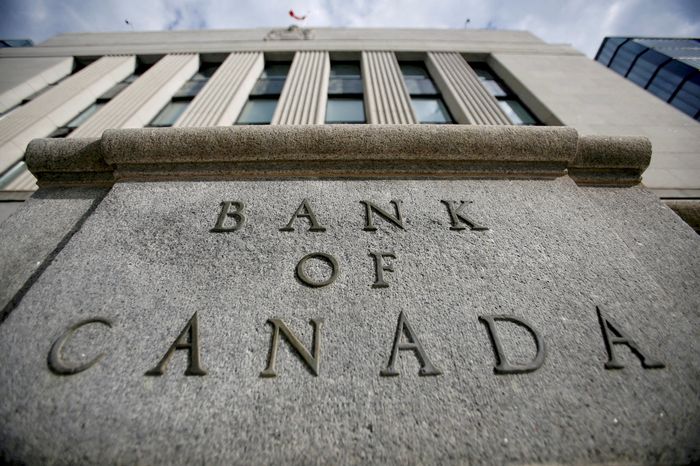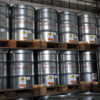The Bank of Canada decided to hold its key interest rate at five per cent for the sixth time since July. The central bank indicated that it will ensure inflation is trending downwards in a sustainable manner before it begins cutting rates.
The central bank said on Tuesday that inflation is still too high, even as various inflation measures, which don’t include sectors like food and energy, have been trending downward the past few months.
In February, inflation cooled to 2.8 percent as price growth slowed across goods, food, clothing, and services. However, high rent and mortgage interest costs persist in driving up the overall inflation rate. The bank anticipates that inflation will edge closer to its two percent target this year and projects it to reach that mark by 2025. Additionally, the bank foresees robust GDP growth for both this year and in 2025, driven by population growth and increased household spending.
“I realize that what most Canadians want to know is when we will lower our policy interest rate. What do we need to see to be convinced it’s time to cut?” Bank of Canada governor Tiff Macklem said during a news conference.
“The short answer is we are seeing what we need to see, but we need to see it for longer to be confident that progress toward price stability will be sustained. The further decline we’ve seen in core inflation is very recent. We need to be assured this is not just a temporary dip.”
Macklem also noted that a rate cut in June is “within the realm of possibilities.”
Governor Tiff Macklem: “We’ve come a long way in the fight against inflation, and recent progress is encouraging. We want to see this progress sustained.”https://t.co/JbrFBk9twK#cdnecon pic.twitter.com/peP9U81in9
— Bank of Canada (@bankofcanada) April 10, 2024
Read more: Calibre Mining remains on track to deliver on its 2024 guidance of between 275-300K ounces
Read more: Calibre secures commissioning contract for Valentine plant; signs gold supply deal with Asahi
Bank of Canada will outpace Fed in rate cuts
The Bank of Canada initiated an aggressive campaign to cool inflation by raising interest rates in March of 2022. This marked the beginning of a series of 10 rate hikes in less than two years.
Economists predict that the Bank of Canada will outpace the U.S. Federal Reserve in rate cuts as economic data in both countries diverge. In March, U.S. inflation surpassed expectations, rising by 0.4 percent after a similar increase in February. This pushes expectations of a Fed rate cut further into the second half of the year. Macklem stated that he doesn’t foresee a significant impact from U.S. inflation on Canada.
The Bank of Canada targets to maintain inflation at the 2 per cent midpoint of a range of 1 to 3 percent in its inflation-control policy. The year-over-year increase in the total consumer price index (CPI) sets this target. The CPI is the most important measure of the cost of living for Canadians.
The CPI comprises goods and services commonly purchased by Canadians, including food, housing, transportation, furniture, clothing, recreation, and other items. Additionally, the bank tracks a set of “core” inflation measures to disregard temporary fluctuations in total CPI and focus on the underlying inflation trend.
The bank pointed to “very elevated” shelter price inflation, driven by increases in rent and mortgage costs. According to the Monetary Policy Report (MPR), experts expect food price inflation to continue falling because of global declines in agricultural prices.
Read more: BMO underwriters agree to invest C$100M in Calibre Mining
Read more: Calibre Mining added to VanEck Gold ETF
Gold as a safe haven asset
Investors often turn to gold as a safe haven asset during periods of high inflation due to its intrinsic qualities that make it resistant to the erosion of value caused by rising prices. Gold has historically maintained its purchasing power over time, serving as a hedge against inflationary pressures.
Unlike fiat currencies, which can be devalued through excessive money printing, gold’s scarcity and universal acceptance lend it stability in times of economic uncertainty. Its tangible nature provides a sense of security to investors seeking to preserve wealth amidst volatile market conditions.
Furthermore, gold is not tied to any single government or central bank. This makes it immune to political risks that can exacerbate inflationary concerns. Thus, investors view gold as a reliable store of value to safeguard their portfolios during periods of heightened inflation.
The spot price of gold is at an all time high at the time of writing, ranging around USD$2,346.
For investors, soaring gold prices typically signify economic uncertainty or inflationary pressures, prompting a flight to safe-haven assets like gold.
Meanwhile, for miners, elevated gold prices translate into higher revenues and profits, as the value of their extracted gold rises.
This not only boosts the financial performance of mining companies but also incentivizes further exploration and development of gold deposits. This could potentially lead to increased production and employment opportunities in the mining sector.
For example, Calibre Mining Corp. (TSX: CXB) (OTCQX: CXBMF) produced 61,767 gold ounces Q1, and anticipates gold production in H2 to rise as it adds additional production sources and higher grade zones. These particular sources include its acquisition of the Valentine Mining Project in Newfoundland, which is a high value project and will add a substantial amount of gold production and revenue to the company.
.
Calibre Mining is a sponsor of Mugglehead news coverage
.













